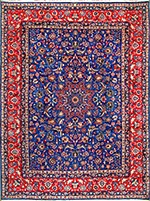Textiles Studies
Date of this Version
2003
Document Type
Article
Abstract
The fall of Granada in 1492 reestablished Christian dominion in Spain after centuries of Islamic rule. The rapid expansion of Islam from Arabia in the 7th century encompassed the rich cultural legacy of the Late Antique world, forging a unified empire throughout the Middle East and eastern Mediterranean lands and across North Africa to Spain within a short span of several decades. Arab and Berber armies had crossed into Spain in 711, generating at once an effort that lasted for many generations to restore Christian rule. In Islamic times, the Iberian peninsula was called al-Andalus, or Andalusia. Although we have scant evidence for early rug-weaving, rugs woven there in the 15th and 16th centuries represent diverse cultural traditions at a time of great political transformation. The carpets of Andalusia, also called Spanish carpets, are among the oldest preserved in the world. They document a blending of cultural traditions, both reflecting an inheritance of earlier rug-weaving traditions and an Islamic cultural heritage from Turkey and Central Asia, while heralding Europe's Renaissance.
Included in
Art and Materials Conservation Commons, Art Practice Commons, Fiber, Textile, and Weaving Arts Commons, Indigenous Studies Commons, Museum Studies Commons

